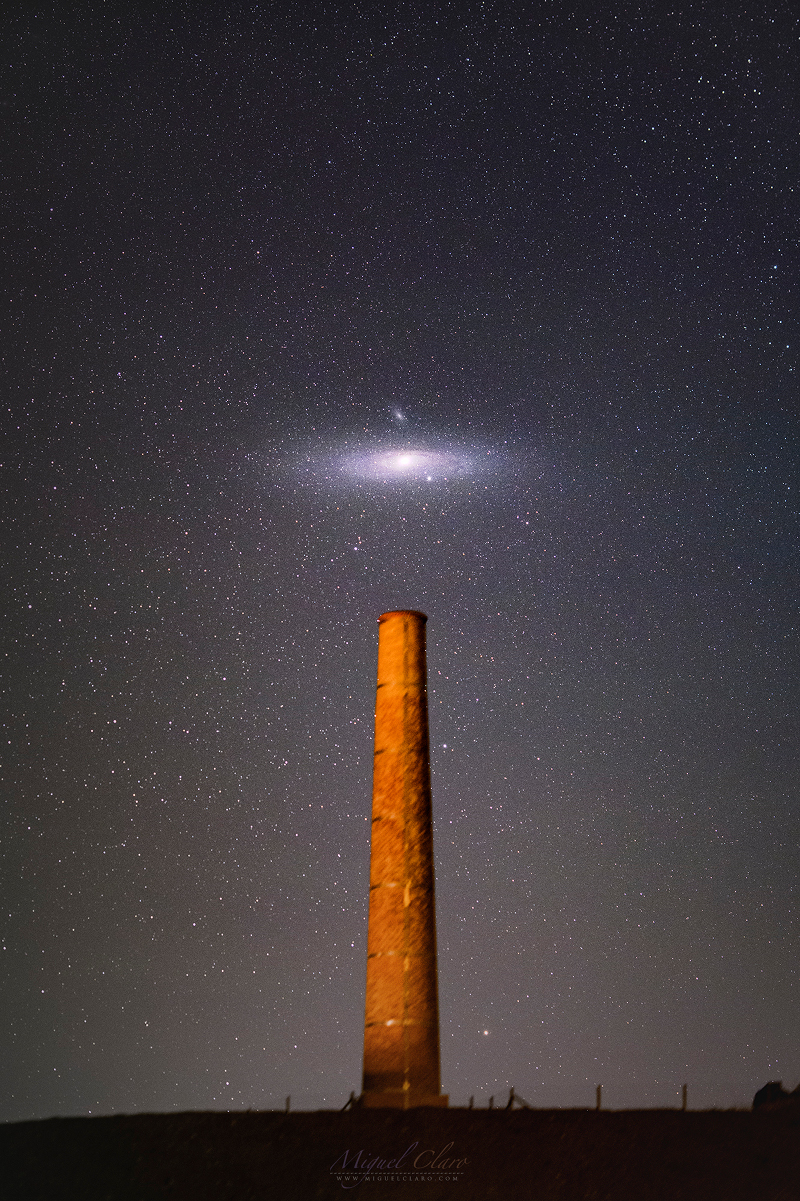单曝光影像里的仙女座星系
2021年06月25日
Andromeda in a Single Shot
Image Credit & Copyright: Miguel Claro (TWAN, Dark Sky Alqueva)
Explanation: How far can you see? The Andromeda Galaxy, 2.5 million light years away, is the most distant object easily seen by the unaided eye. Other denizens of the night sky, like stars, clusters, and nebulae, are typically hundreds to thousands of light-years distant. That’s far beyond the Solar System but well within our own Milky Way Galaxy. Also known as M31, the external galaxy poses directly above a chimney in this well-planned deep night skyscape from an old mine in southern Portugal. The image was captured in a single exposure tracking the sky, so the foreground is slightly blurred by the camera’s motion while Andromeda itself looms large. The galaxy’s brighter central region, normally all that’s visible to the naked-eye, can be seen extending to spiral arms with fainter outer reaches spanning over 4 full moons across the sky. Of course in only 5 billion years or so, the stars of Andromeda could span the entire night sky as the Andromeda Galaxy merges with the Milky Way.
Tomorrow’s picture: pixels in the Sun
单曝光影像里的仙女大星系
影像提供与版权: Miguel Claro (TWAN, Dark Sky Alqueva)
说明: 你能看多远?2百50万光年远的仙女座星系,是肉眼轻易可见的最遥远天体。其他夜空中可见的天体,诸如恒星、星团和星云,距离通常介于数百到数千光年之间,远在太阳系之外,但近在我们银河系之内。在这幅摄于葡萄牙南部的精心规划深空夜景里,这个亦名为M31的河外星系,高悬在老矿场的烟囱之上。在这张追踪星空拍摄的单曝光影像里,仙女座星系看起来庞大无比,前景则因相机转动而稍微晕开。此外,肉眼通常勉强可见的此星系明亮中心区,稍暗的外围一直延伸到螺旋臂,涵盖了超过4个满月的天空。再过50亿年左右,随着仙女座星系和银河系合并,仙女座星系的繁星会覆盖整个地球的夜空。
明日的图片: pixels in the Sun

